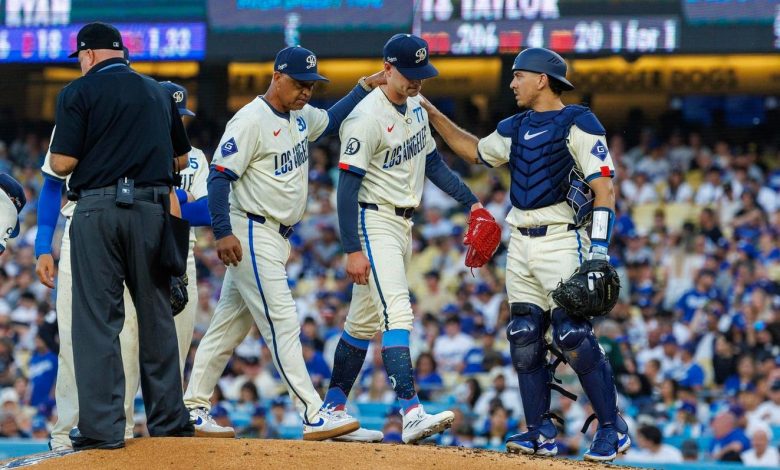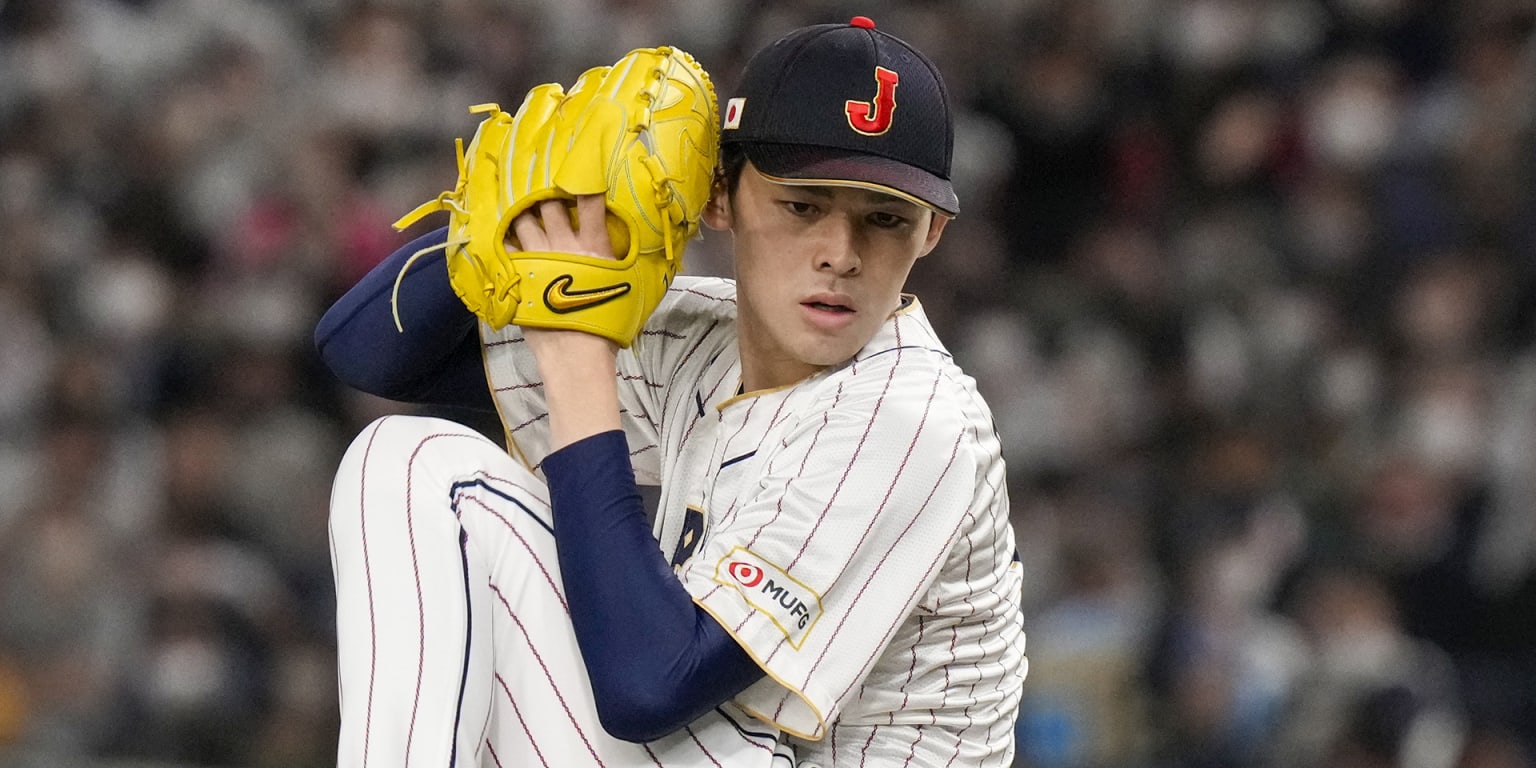MLB Report Shows Systemic Issues With Pitcher Injuries That May Be Impossible To Fix

Ryan River of the Dodgers is just one example of the increase in the number of pitchers who have been … [+]
Los Angeles Times via Getty Images
From the amateur ranks to Major League Baseball, the injury rate for pitchers has increased dramatically over several decades, especially the past 10 years, a new report shows. It may be almost impossible to solve the problem.
Whether it’s Shohei Ohtani, Shane Bieber, Spencer Strider, or Yuri Perez, the number of pitchers suffering major injuries has become an integral part of Major League Baseball. The question of why we are seeing increases continues to be explored as MLB invests in investigating this trend.
The 63-page report sent to all 30 Major League Baseball clubs shows that an increased emphasis on speed and pitches with movement has pushed pitchers to exert maximum effort, reducing the number of innings pitched, while increasing the injury rate. The effects of the introduction of the pitch clock are still not fully known, and the changes to the surface of the ball made it slippery which led to a harder grip, although the report confirms that increases in pitcher injuries were increasing significantly prior to these events.
The report was prepared by the league in 2023 and interviewed more than 200 individuals “including former professional pitchers, orthopedic surgeons, athletic trainers, club officials, biomechanics, player agents, amateur baseball stakeholders, and other experts in Developing shooters.” No current players were interviewed, and the MLB Players Association was not involved in the study. All individuals in the report are not named.
The report shows that this trend is systemic all the way into youth baseball as early as Little League where kids emulate pitchers in MLB, while changes like travel ball and a year-round focus on just pitching rather than resting or playing other sports are creating a crisis in Sports nutrition system.
The report shows that the number of players placed on the injured list (IL) and the number of days players spent on the list have increased significantly over nearly three decades. The report goes on to say that “these trends continue even after accounting for roster changes and transactions that, in theory, should have resulted in a reduction in the number of IL placements, including an increase in the minimum duration of IL placements for pitchers and an increase in the overall size of active rosters.”
A chart showing the number of MLB pitchers on the injured list and the number of days they are on it.
Major League Baseball
What is concerning is that among these injuries, “the number of surgeries for the ulnar collateral ligament (including UCL reconstruction, known as “Tommy John” surgery, and the recently introduced UCL repair), typically require more than a year of rehabilitation. “The return to competitive play has grown rapidly since the early 2010s,” the report adds, showing injuries at the minor league and major league levels shows a significant spike in Tommy John surgeries that will certainly emerge from the pandemic in 2021 due to inability. To train properly.
Number of Tommy John surgeries in Major League and Minor League Baseball.
Major League Baseball
Performance results are driving the trend
The increase in speed and scores with “things” was driven by performance outcomes. Pitchers are given daily reports showing movement and velocity metrics, with a general tendency to work on hitting the pitchers rather than allowing the defense to work behind the pitcher with ground ball strikeouts or fly ball rate. Velocity has increased, not only with fastballs, but with changeups, sliders/sweepers, and curveballs. The trend in moving away from fastballs to pitches with action shows a staggering decline from 60% in fastball usage in 2008 to between 45-50% in 2024.
“Anyone who works in baseball would agree that the main driver of pitching injuries is velocity,” said one unnamed orthopedic surgeon. “Speed puts more stress on the elbow. It’s the recipe for success. This happens at all levels. We’re seeing a domino effect from young people along the way. I don’t want to oversimplify the problem, but that’s the main driver as I see it.”
“One of the big risk factors is not just the fastball speed or the changeup, it’s the change in mechanics to get higher spin,” said one biomechanist and academic researcher. “It’s not just an increase in speed, it’s an increased chase of spin rate. People chase spin and speed, and I think they change their mechanics to chase that. If I’m trying to run or swim or do something fast and I try to run as hard as I can, it’s going to get sloppy.” Done Breaking down the mechanics to chase that. If you’re trying to get a certain speed or a certain spin rate, changing the mechanics is a mess, it’s inconsistent and it’s a lot of pressure.”
Speed pitch types in MLB
Major League Baseball
Off-season injuries rise
The report goes on to show that over the past decade the number of pitchers on the IL coming out of spring training has increased dramatically. Why this happens is not fully understood as the report says: “Several experts have suggested that high-intensity pitching programs in the off-season and the lack of consensus on the optimal workload for spring training likely contribute to a pitcher’s injury risk.”
“The kids know how to get paid,” said one front office executive. “They’re getting paid for stuff. The season is long, and when it’s over, they’re going to go camping. And it’s December. And they’re throwing slider after slider trying to get the right grip. You can’t tell me that doesn’t affect them. I don’t think guys are Ripping slider after slider in January – there has to be some impact to that.
Repeated pitcher injuries throughout the season.
Major League Baseball
A worrying trend among young people
Perhaps most worrying is that the trend we are seeing has trickled down to the youth level. The report concludes that not only are players in Major and Minor League Baseball affected, but all the way up to Little League.
At the beginning levels, while kids may aspire to emulate stars in Major League Baseball, the bigger issue is the overall misuse of the arm as a cultural shift in getting kids to focus on an individual sport year-round. As the report details, “A survey of 102 professional baseball players found that 48% of players majored in baseball before high school. This study also found that those who majored in baseball before high school were more likely to report serious injuries than players who did not major.
The vast majority of former players (64%) went on to say that they felt the need to focus solely on baseball all year did not impact their ability to reach and excel in Major League Baseball.
On top of kids focusing solely on baseball year-round, arm usage has increased all the way up to Little League where pitch limits are largely not enforced, and the number of games increases with tournaments.
“It’s not just the 25 pitches, it’s all the other pitches,” said one young baseball coach. “Imagine you have a kid on your Little League team, so reporting is mandatory. He’s your shortstop and closer. That kid could be your starting shortstop, which is a high-volume, high-intensity position. The nature of that job is they’re going to throw a lot and they’re going to have to throw hard Because you’re trying to get out. Let’s say this boy or girl is also the closer on the team, top 6, bottom 6, that kid will come in and try to throw seeds if you’re playing Monday, Wednesday, Friday, they’ll never get a day off , And repeat that, week after week, and you’ll end up in a state of overuse, a state of fatigue, which we understand is the biggest indicator of injury.
Drawing a solution does not come without an easy answer
The report’s recommendations to address the problem come in several forms, but implementing and reversing this trend seems almost impossible. While MLB’s rule changes have been designed to add more contact and action to the game, the addition of a pitch clock and the data behind its effects may not be fully understood for some time. The likes of commissioner Rob Manfred trying to thread the needle with wear and tear while maintaining the pace and health of pitchers is a daunting task.
In a recent interviewManfred pointed out that the ability to market the game by keeping rookie pitchers — many of the game’s biggest stars — on the mound for long periods — five or six innings — can’t be done in a prescriptive way.
“It’s just a very sharp tool to fix this problem,” Manfred said of the number of forced innings for starters. “I don’t think it can be a prescriptive: ‘You have to go for six innings.’ I think it has to be a series of rules that create an incentive for clubs to develop pitchers of a certain type.
Manfred acknowledged the report and noted that the increase in speed and spin rate are the root causes of the increase in injuries. How can the league balance it?
“For me, this needs to be addressed in a more nuanced way, perhaps through the rules surrounding transactions,” Manfred said. “That means the number of times pitchers go in and out of the roster. One of the things that happens today, is a guy pitches three days in a row, gets cut, and they bring in someone else to give him some rest, instead of him staying on the roster all the time. I think we need to create Incentives through things like roster rules, and transaction rules for clubs to develop pitchers who get deeper into the game.
2024-12-18 18:14:40





